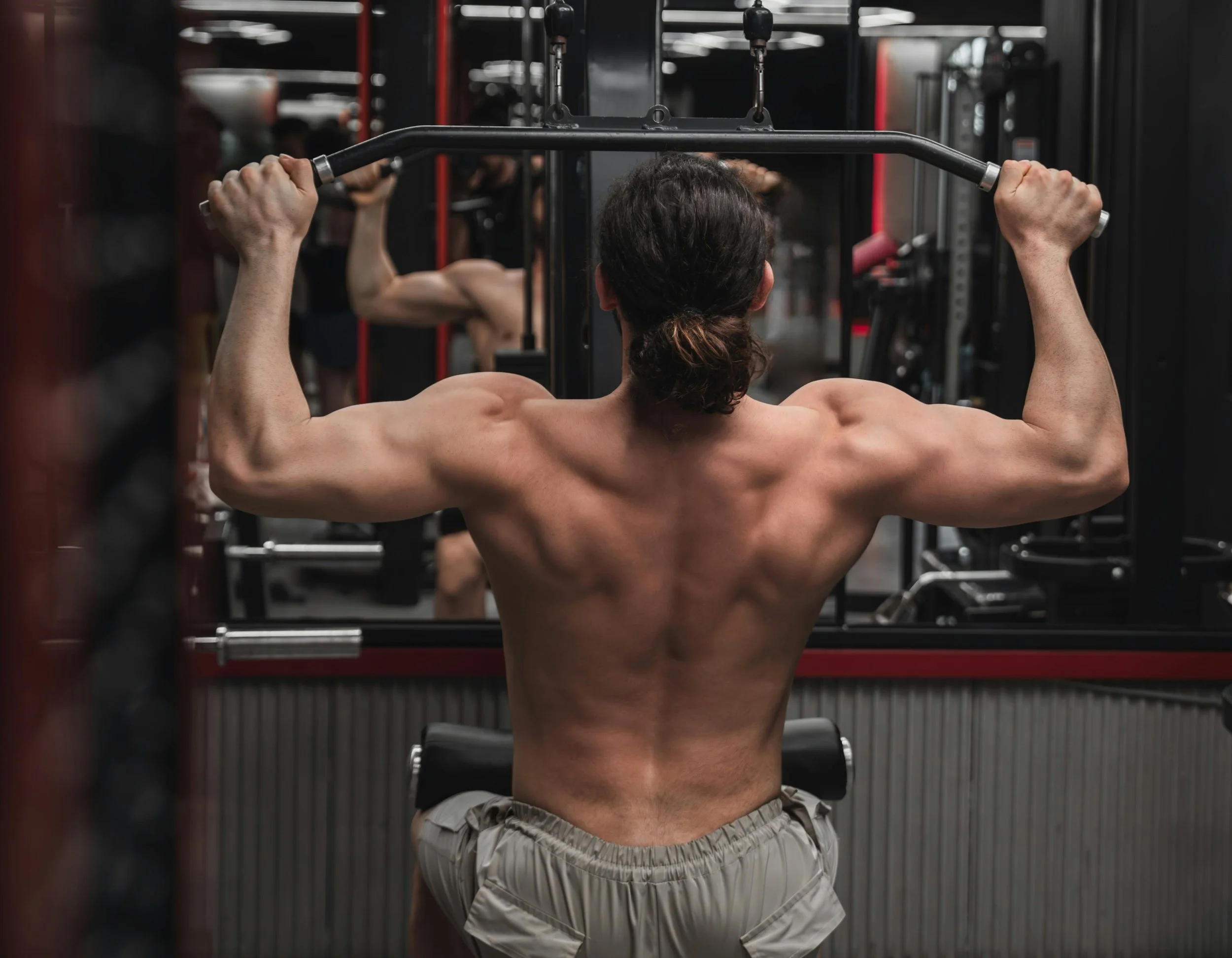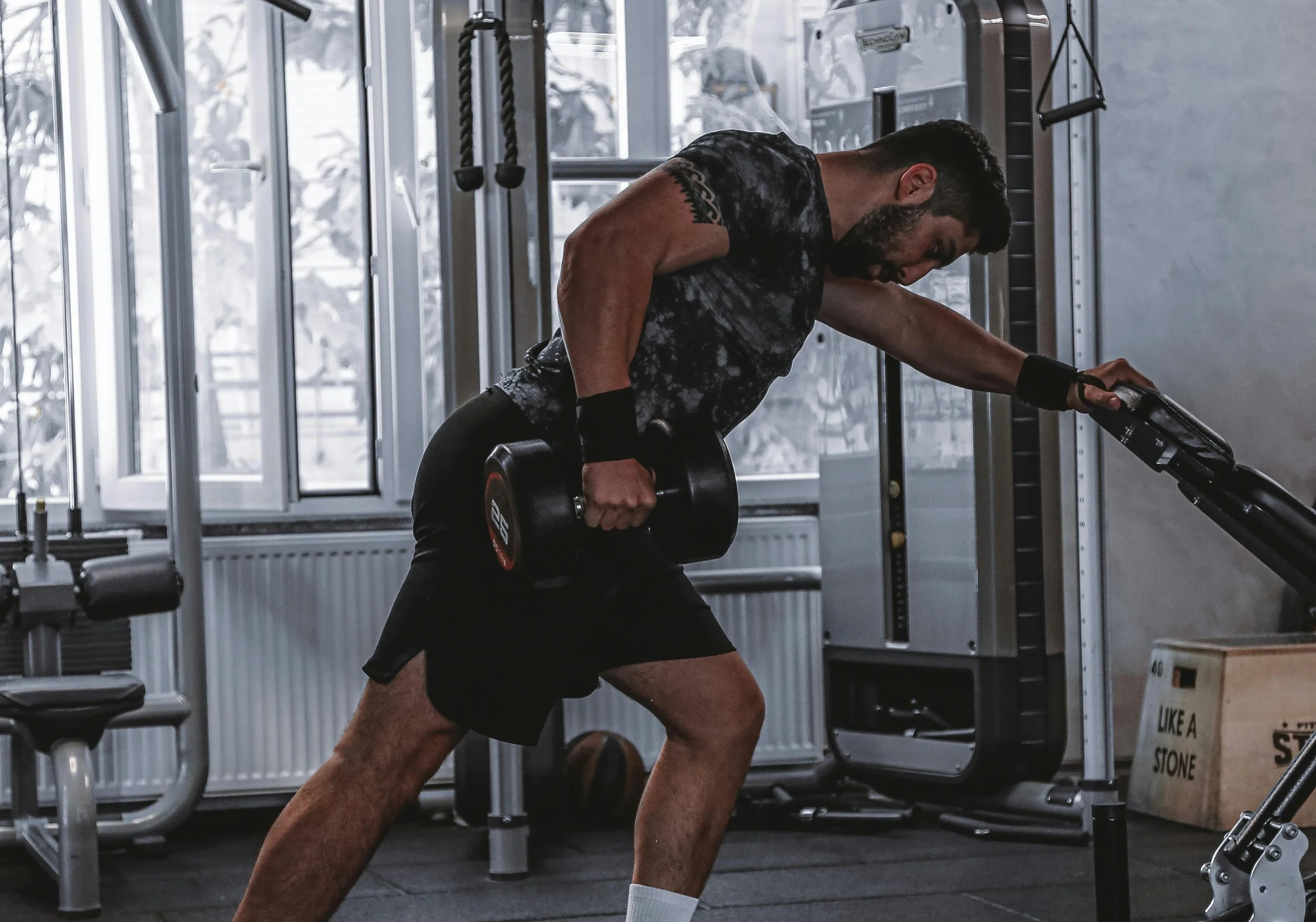Maximize Back Strength: How to Master Lat Pulldowns
Disclaimer: As an Amazon Associate, I earn from qualifying purchases. I also get commissions from other companies for purchases made through links in this post.
The lat pulldown is a versatile compound exercise that can be performed using a cable pulley machine, lat pulldown machine, dumbbells, or a resistance band. It targets multiple upper body muscles, core stabilizers, and hip flexors, offering a range of options to suit your preferences and available equipment.
Plus, you can use alternatives to the traditional lat pulldown exercise based on your available equipment or if you want to work muscles to various proportions. Use an alternative grip, like pronated, alternating, narrow, or wider, to target specific muscles, such as the biceps or forearms.
Another way to change the focus of the exercise is to use a straight arm pulldown, which requires almost full extension of the arms throughout the entire motion to include the triceps in the movement.
As you can see, the lat pulldown is an upper-body exercise that targets various muscle groups. Using different variations, you can safely tax your back, shoulders, core, and legs for a full-body toning workout. Keep reading to learn more about this amazing exercise!
What Muscles Does the Lat Pulldown Work?
The main muscle groups worked in the lat pulldown include the latissimus dorsi, which are the primary movers of this exercise. The ‘lats’ are the largest muscles in the back, usually involved in lat pulldowns, seated rows, incline rows, bodyweight rows, and other pulling exercises.
The lats' importance in everyday movements and pulling exercises in the gym cannot be understated. They are the biggest muscles responsible for adduction (pulling in towards the body), extension, horizontal abduction (moving away from the body), and internal rotation. For example, the lats are the main movers in exercises that involve pulling towards the body, such as rowing or rock climbing.
Other muscles involved during the lat pulldown include the pecs, trapezius, brachialis, teres major, rhomboids, biceps, infraspinatus, and wrist flexors.
What Are the Benefits of Lat Pulldowns?
This exercise not only helps improve pull-ups and enhances sport-specific movements, but it also strengthens your hips and core. By understanding these benefits, you can feel motivated and inspired to include lat pulldowns in your regular exercise routine.
Helps Improve Pull Ups
Since the lat pulldown uses the same muscles that one would use for a pull-up, it can help you build up to performing a pull-up without any assistance. For those who want to learn how to do an unassisted pull-up without a machine or bands, performing lat pulldowns can help you build the same muscles to maintain proper form and adequate muscle activation.
Sport-Specific Movement
Performing lat pulldowns can help athletes with similar motions in their respective sports, such as swimming, cross-country skiing, CrossFit, gymnastics, wrestling, judo, or other martial arts. Pulling motions are very common in sports and other weightlifting exercises, so building your posterior muscle chain can help make motions in training or games easier and more natural.
Builds the Hips and Core
The final benefit of doing a lat pulldown in your exercise routine is building your core and hip muscles. Stabilizing yourself on the seat while performing the pulldown is a beneficial way to tax your hips, core, obliques, and leg muscles to avoid swaying or rocking on the seat. In fact, studies have shown that doing lat pulldowns taxes the core the same way, or more, than a bodyweight pull-up.
How to Do a Lat Pulldown Correctly
Follow these step-by-step instructions to ensure you're performing the lat pulldown with the correct form. This will help you feel confident and knowledgeable about how to perform the exercise safely and effectively.
Instructions:
Choose the proper weight on the lat pulldown machine — choose something lightweight and doable for your first time.
Sit on the seat and adjust the knee pads to firmly press against the tops of your thighs.
Keep your feet flat on the floor and your knees bent at 90 degrees.
Reach up and grab the bar wider than shoulder-width.
Slightly lean back and keep your chest up, with your back straight the entire time.
Pull the bar down towards the top of your upper chest.
Hold the bar at the end of the range of motion for 1-2 seconds, squeezing the middle of your back.
Slowly return to the starting position in 3-4 seconds during the eccentric portion of the movement.
Recommended sets and reps:
3-4 sets x 10-12 reps for beginners
3-5 sets x 5-8 reps for hypertrophy
3-5 sets x 3-5 reps for power
Common Mistakes to Avoid With Lat Pulldowns
Rounding Your Upper Back
Arguably, the biggest mistake to avoid when doing lat pulldowns is rounding your upper back throughout the movement. When you pull the bar towards your chest, make sure to keep a slightly backward lean so that your back is flat, your chest is up, and your feet are firmly on the ground. If you round your shoulders or upper back during the pulling portion of the movement, you need to lower the weight and focus on squeezing your shoulder blades together.
Leaning Too Far Back
The next form mistake to avoid when doing the lat pulldown exercise is leaning back too far. Leaning back too far means taxing your muscles incorrectly, focusing more on the middle back than the lats.
Pulling the Bar Behind Your Neck
The last mistake you must avoid while doing lat pulldowns is pulling the bar behind your neck. Pulling the bar behind your neck puts too much strain on your neck and shoulders, causing overstretching and mobility concerns. Pull the bar to the top of your chest and stop below your chin to target your lats without straining your shoulders.
Exercise Alternatives That Target the Lats
Resistance Band Lat Pulldown: Tie a resistance band (affiliate link) to a high-up surface, such as a horizontal bar or anchor point. Stand, kneel, or sit down, and then perform the lat pulldown exercise to pull the band below your chin.
Barbell Row: Set up a barbell (affiliate link) on the ground. Walk up to the bar so it is over the center of your feet and your shins are against it, and place your hands wider than shoulder-width on the bar. Hinge forward, grab the barbell, brace your core, and raise it to a 45-degree angle. Then, pull the barbell to your chest, focusing on only moving your arms and elbows.
Incline Dumbbell Row: Set a bench to a 45-degree angle, put your chest on the bench, holding a dumbbell (affiliate link) in each hand. With your palms facing each other, bend your elbows to lift the weights up next to your chest, keeping your neck and back in a neutral position. Move the weight towards your upper torso, squeeze your back muscles, and slowly lower the weight back down.
Landmine Row: Set a barbell in the landmine hold and place a plate as a weight on the opposite end of the bar. Use the bar, or a V-grip, around the weighted end of the barbell. Hinge forward so you are 45 degrees from the ground, squeeze your shoulder blades, and pull the weight towards your chest.
Inverted Bodyweight Row: set up a barbell on a squat rack. Lie under the bar and use an underhand grip slightly wider than your shoulders. Place your feet on the ground, or make it more challenging by staying on your heels and using a wide grip. Pull your torso and chest to the bar and slowly lower back down.
Final Thoughts
Lat pulldowns are a great starter exercise for improving athletic movements, pull-ups, and other functional exercises. For those who are new to using the gym, consider talking to a healthcare professional, physical therapist, or athletic trainer before incorporating lat pulldowns to ensure they do not agitate any current wrist, forearm, or shoulder pain.
But, if the movement is done correctly and safely, you can easily incorporate lat pulldowns into your workout routine for a beneficial upper-body compound exercise that gives you a lot of bang for your buck. Unlike isolated exercises that only work one muscle group, the lat pulldown taxes multiple muscles simultaneously, leading to a bigger calorie burn and a greater chance of building muscle in the long run.
There are numerous ways to add lat pulldowns to your exercise routine. Consider adding them with another back exercise for a compound set or pairing them with a chest exercise for a superset. For example, you can do a seated cable row with a lat pulldown as a compound set or pair a bench press with a lat pulldown for a superset.
No matter how you add the lat pulldown to your exercise routine, you will notice the muscle definition and gain in your shoulders, back, and core after a few weeks of consistency.
Frequently Asked Questions
Should you lean back when doing lat pulldowns?
You should learn back at a 70 or 80-degree angle to tax the lats without working too much of the middle back. However, leaning back too far can decrease the effectiveness of the exercise.
What is the wrong way to do a lat pulldown?
There are a few incorrect methods to avoid when doing the lat pulldown:
Incorrect starting position — Make sure you are leaning slightly back.
Rounding your back — Keep your back flat and in a neutral position throughout the movement.
Pulling behind your neck — Pull the bar to the top of your chest.
Using momentum — Keep your core braced and feet flat on the ground to avoid using momentum to swing your body back and forth to bring the bar down. Instead, brace your core, keep your feet on the ground, and keep your chest straight up.
How to do lat pulldowns without a machine?
There are variations of the lat pulldown that you can do without using a machine to tax the lats in the same way you would with the machine. Consider using light weights to perform a lat-pulling motion or a resistance band tied to an anchor.
Main image credit: Doğu Tuncer / Pexels
The information provided in this article is for educational purposes only and is not intended as a substitute for professional medical advice, diagnosis, or treatment. Always seek the guidance of your physician or other qualified health provider with any questions you may have regarding a medical condition. Never disregard professional medical advice or delay in seeking it because of something you have read in this article.










